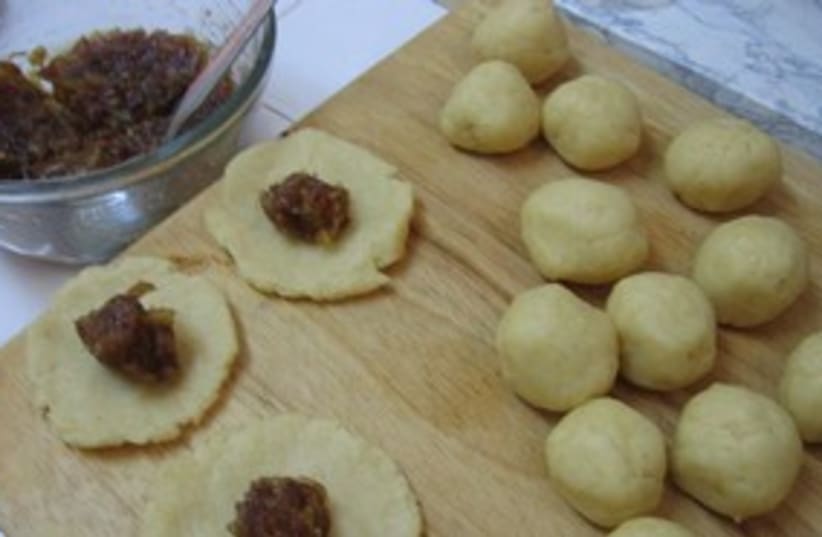For the filling-3/4 cup honey dates-3 tablespoons sugar-1 1/2 teaspoons orange flower water-1 1/2 teaspoons rose water
Directions1. In a large bowl, dissolve the yeast in the water. Add the orange flower water, egg, and melted butter. Stir.2. Stir in the semolina and then sprinkle on the sugar and salt and stir.3. Add the flour and stir to combine. The mixture should be crumbly but hold together when squeezed. Cover with plastic wrap and let rest for 1 hour.4. Place all the ingredients in a food processor and process to a paste. Transfer to a bowl and set aside, covered.5. Place a rack in the center of the oven and preheat the oven to 350°F (175°C). Set out an 18-by-12-inch baking sheet near your work surface.6. To shape the mamoul without a mold,, use a tablespoon to scoop up a full level tablespoon of dough and then use your hands to flatten it into a nearly 3-inch-diameter round. Scoop up 1 1/2 teaspoons of the filling and place it on the center of the round. Pull the edges up to cover the filling, then roll the cookie lightly between your palms to make a ball. Place seam side down on the baking sheet. Repeat with the remaining dough and filling, placing the cookies about 1/2-inch apart. Prick each cookie decoratively with a fork. Brush the tops with a little milk.7. If you are using a carved mold to shape the cookies, oil the inside of the mold with a bit of olive oil and then fill it so it is almost full of dough, using your fingers to press the dough into the mold to make a hollow. Then place the filling in the hollow and wrap the dough around the filling before removing from the mold. Remember to re-oil the molds every 3 or 4 cookies.8. Bake cookies until they are golden brown at the edges, 20 to 25 minutes. Transfer immediately to a wire rack to cool.Read more of Johanna's thoughts on food at: http://www.johannawrites.com
